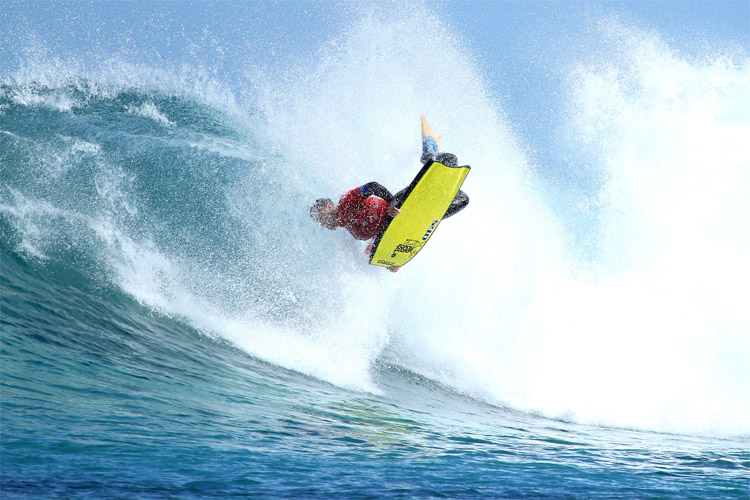Improve your bodyboarding skills with a collection of techniques, tips, and advice given by a professional bodyboard. Remember, it's never too late to learn and get from good to great.
The devil is in the detail. Everything counts when you're riding a wave in prone or drop-knee mode.
The body and board will interact with the water wall, resulting in a unique outcome.
There are two crucial stages for bodyboarders.
Getting from a beginner stage (where you can hardly complete an entire ride) to an intermediate level (where you can read a wave and complete a roll or 360).
Then again, taking your intermediate bodyboarding to the advanced arena is another story.
If you want, you'll get it right. After that, it's only a matter of training.
Train Hard
Heydon Bunting, also known as "da Boogieman." is a professional bodyboard coach with more than 25 years of experience.
He has taught beginners and professionals. He knows what improvement means.
The legendary rider has shared a few essential ideas if you really want to take your bodyboarding skills to the next level.
"Good bodyboarding comes down to good technique, flow, surfing as much as you can, staying fit and healthy, a correct-sized board, and stretching every day, especially your lower back, hamstrings, quads, calves, and shoulders," says Bunting.
He also believes bodyboarders should develop a "creative visualization" because "if you can't see yourself in your mind's eye surfing good, you won't be able to in the real world."
Heydon Bunting proposes the concept of "mind surfing" as much as you can, tapping into as many senses as you can.
A good exercise could be imagining the wave of your dreams when you're already in bed, just before falling asleep.
A Good Technique
The technique is critical.
The Australian bodyboard coach says you can't get to the level of an elite rider without proper technique.
For example, a correctly placed front hand right on the corner for both lefts and rights is crucial. Also, get fingers spread slightly for control.
Bunting suggests your outside rail hand should be about halfway down your board with your elbow nice and close to your body (no chicken wings or back elbow on the deck).
"Chin up and chest up with arched back, although still relaxed. Legs slightly apart for control. Silent, efficient kicking under the water surface, no wasted energy," underlines "da Boogieman."
At the same time, try to stay loose, relaxed, and flow with the wave. Work hard on your weaknesses, perfecting your forward spins, both on lefts and rights.
"Work hardest on your unfavored side, whether it be lefts or rights. Then, keep working on your weaknesses until they become your strengths."
Finally, Heydon Bunting tells us to go a little longer and wider with our next board.
"Most guys that we have been working with are riding boards way too short and narrow for their weight and height."
"A board with a little more length and width will smoothen out your riding and help you with the flow, holding speed in trim, and completing maneuvers."
Get filmed or photographed as much as you can.
Then, once you have footage or images of yourself, compare your riding to your favorite bodyboarders.
Study all your favorite riders' techniques, break down every part of their surfing, how they hold the board, where they are holding the board, body placement on the board, legs in trim, legs taking off, etc.
You'll become a better bodyboarder - no doubt about that.
